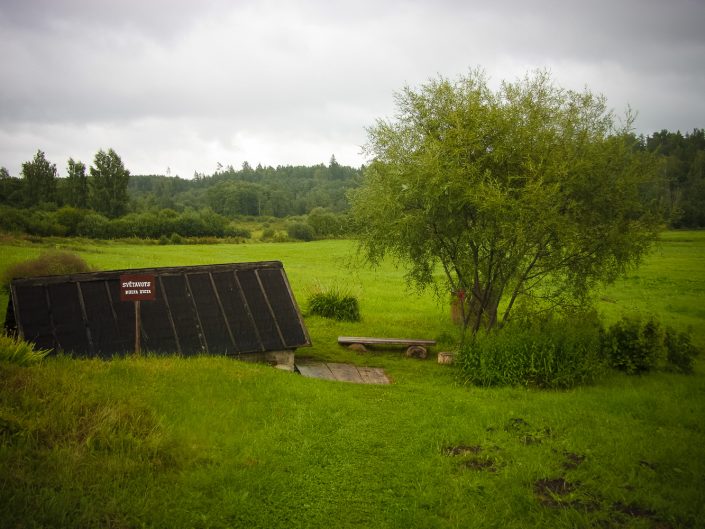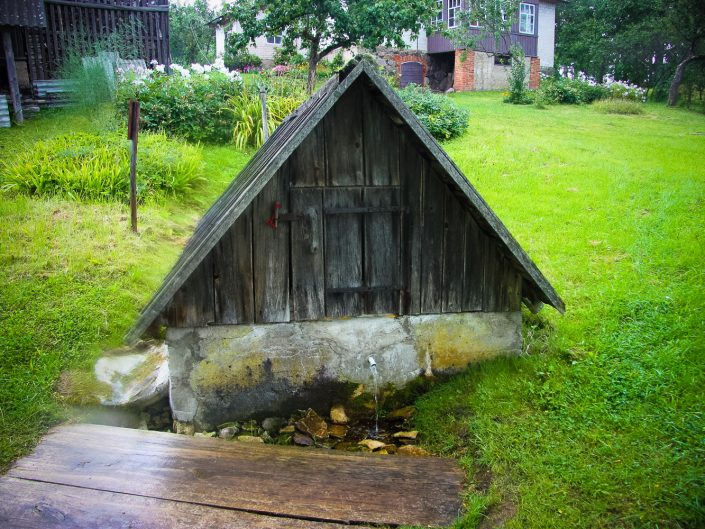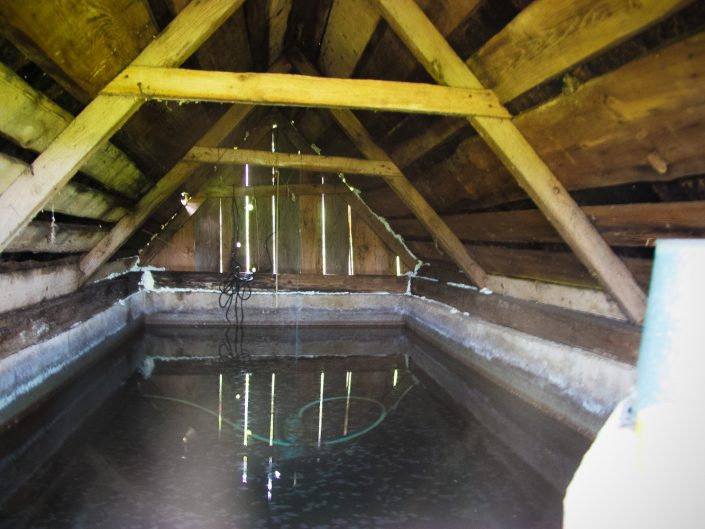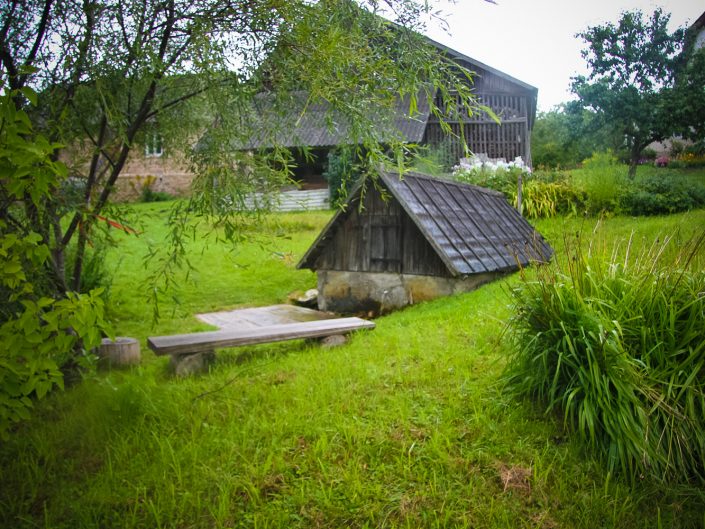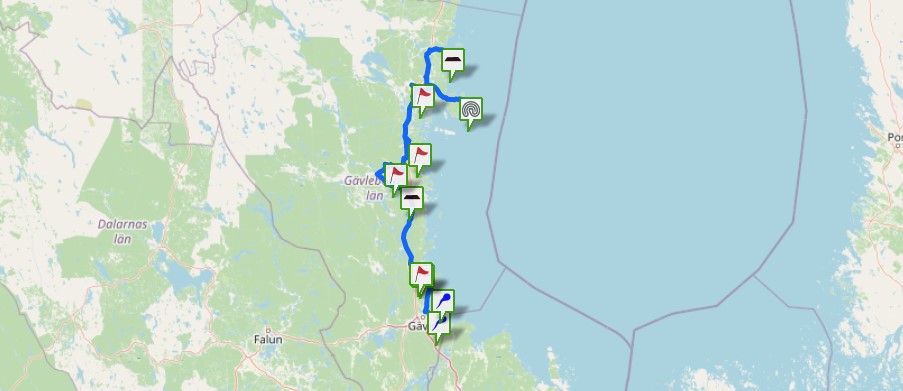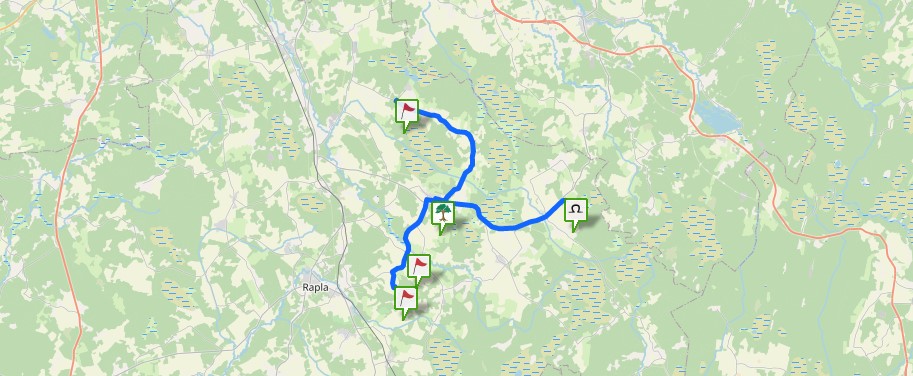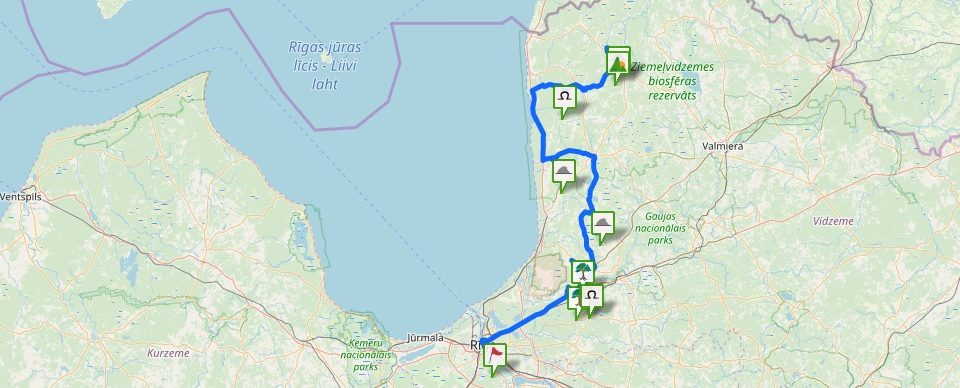State archaeological heritage (State Inspection for Heritage Protection, No 868). Written information about the Holy Spring has been found since 1748, but in more detail it was described in 1832 when the spring was visited by a priest K. Schilling. He described people’s activities around the spring, traditions and cult rituals. The highly qualitative and tasty water of the Tirza Holy Spring is still very popular. It is visited also by healers who charge the water (Delfi, 2012). Over the spring a rooflet has been erected that resembles a small house.
According to tales, the healing power is given to the spring by the fact that the water flows from under the cemetery and church. There are also tales about the spring. A special healing power appears only at Jānis’ night. The first news about the beginning of water usage is related to the Swedish-Russian War time (1700–1721) when some badly injured officer washed himself there and recovered. The Tirza Holy Spring was depicted in the work “The Lame Ješka” (“Klibais Ješka”) by Jānis Poruks (Gulbene Library, 2012). “At the gentlemen cemetery opposite the Tirza Church under a large, old elm, there is a spring that is called by some people the Life Spring (Dzīvības avotiņš). Some call it also the Health Spring. In former times this spring was considered to be holy. People believed that different diseases could be treated with its water, especially if the water was drawn during the Jānis’ Eve. That is why at Jānis’ Eves afflicted horses and other cattle, as well as afflicted people were undressed and poured over with spring water. Some visitors took water in barrels and bottles to bring it home, others when leaving threw silver coins into the spring. Once the master of Tirza prohibited visiting the spring. But the people’s belief in spring water was so great and so strong that nobody could stop them. Then the master ordered to fill up the spring. But at the moment the spring was filled up, the master became blind. In a while he ordered to renew the spring, to concrete it around and he himself also started going there for water. So the master regained his sight and believed that the spring was holy. (L.Tiltiņa. Z. Lancmaņa kr. County Tales. Vidzeme. (Novadu teikas. Vidzeme.) Compiled by L. Rezakova. 2007)

